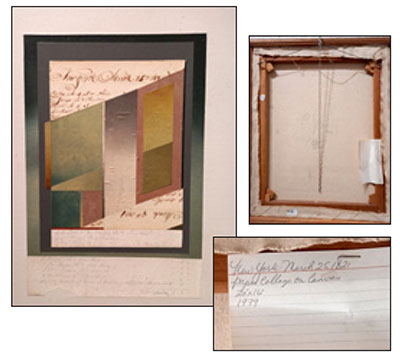PRESENTS FROM THE PAST BOX RIVER NEWS. Your monthly Antiques and Art column from Art Expert, Iain Brunt.
Posted by Trudi on 01/06/2021

Recently I have had a huge amount of correspondence from people looking to sell pieces of art they may have had hanging on a wall or lying in a garage for years. The recent opening up of shops and auction houses (and the success of online auctions) has
led to a real boom in sellers seeking to raise much needed cash as we exit the pandemic.
But what are all these things worth? How are you supposed to know a good deal from a bad deal?
As an art buyer for clients all around the world I’ve had a lot of experience in valuing items both for purchase and sale. Spending a little time researching and preparing your pieces always pays dividends, but it can also be very interesting and very much fun.
Here are a few guidelines as to what to do first:
First of all try and write down as much history as you can as to where it came from. Did you inherit it or find it in an antiques store? You may be able to find some old invoices or receipts which might tell you more.
Next, very carefully take it off your wall. Be careful - sometimes the old cords are fragile and you may need to change them so don’t do it alone. Get someone to hold it with you and watch out for those cobwebs!
The back of any picture can easily tell as much if not more about it than the front, as artists, agents and/or galleries often write or place exhibition labels and stickers on there.
Take this piece by the late renowned American artist John Day for example:

The front looks quite modern but is composed of old ledgers from 1821, so immediately we have a conflict as to how we date it. However, as soon as we turn it around we see the artist or a one-time agent of the artist at some point fixed a studio label to the back that clearly states the title “New York - March 25, 1821”, type of artwork “Paper Collage on Canvas” and that it was created in 1979, which gives us immeasurable help when it comes to a valuation (around £9,500 in this instance). Measuring the piece will also help, but pay attention and measure to the exact millimeter.
If you aren’t lucky enough to find anything to corroborate the item’s date or maker, your first stop should be a bit of research on the internet to see if anyone is selling similar items. A fabulous tool is Google’s “Lens” app on a smartphone, which allows you to take a photo of the item and it will show matches for things that are similar. This is great for works of art and can even quite often find matches for the exact piece, or works from the same artist which will give you a very big helping hand. I should add though, if you find anything, use it as a very rough guide only as not all items are the same and often condition and provenance (proof it is what you say it is) can easily affect the value.
Often it’s easier (and more accurate) to go to your local auction house and see what they say, However, even here, beware, as many auction houses don’t have the in-house expertise for specific items and you may find yourself lumped with a generic valuation taken at face value.
In all instances, the more professional opinions you can mus- ter, the better. Ask more than one person and also ask your local antiques dealer as they often have a lot more knowledge, or will know a specialist that does.
For instance, I once had a Chinese plate that I needed valuing and I took it to 3 of the top London auction houses and they all val- ued it at a few hundred pounds. Unsatisfied with this, I then asked an expert in Hong Kong and we got £35,000 for it at a specialist auction. Seller beware!
Research is the key so if after your own research you’re still not sure you can also ask us at www.artadvisor.ch - a new independent advisory service which is absolutely free.
Next month, have you got the real deal, or a duff knockoff? I’ll tell you how to spot the tell-tale signs that separate frauds and fakes from the genuine article!
Have a happy month of June everyone and see you in July!
Iain Brunt
https://www.boxfordsuffolk.com/_files/BRN/2021_06.pdf





